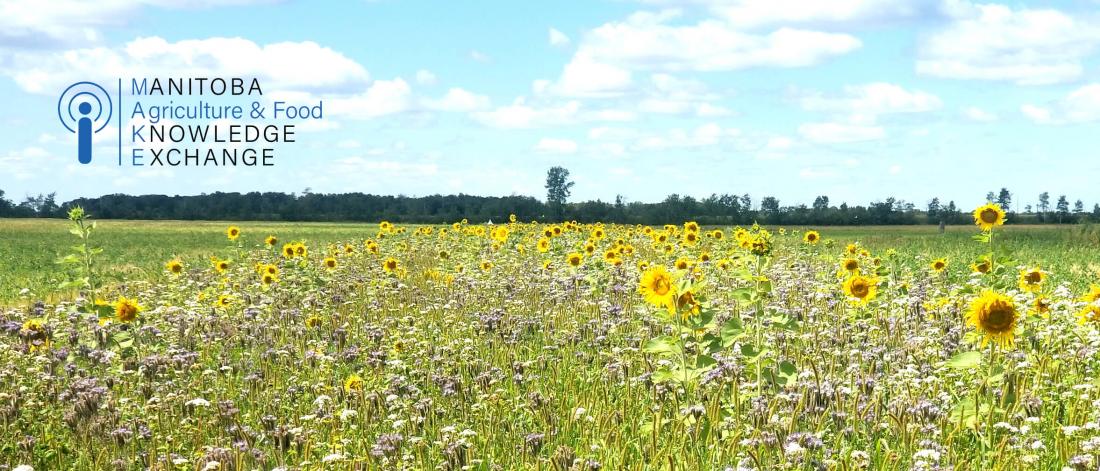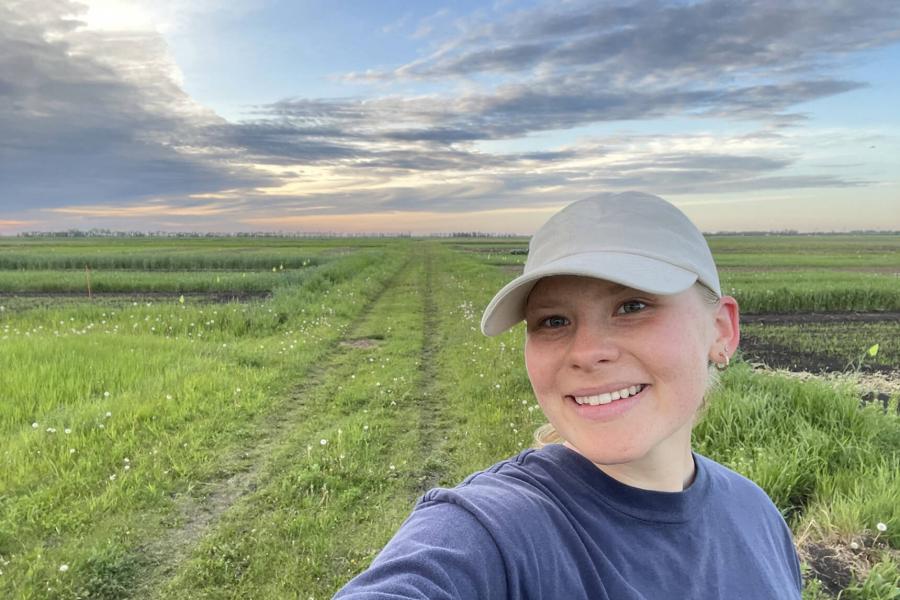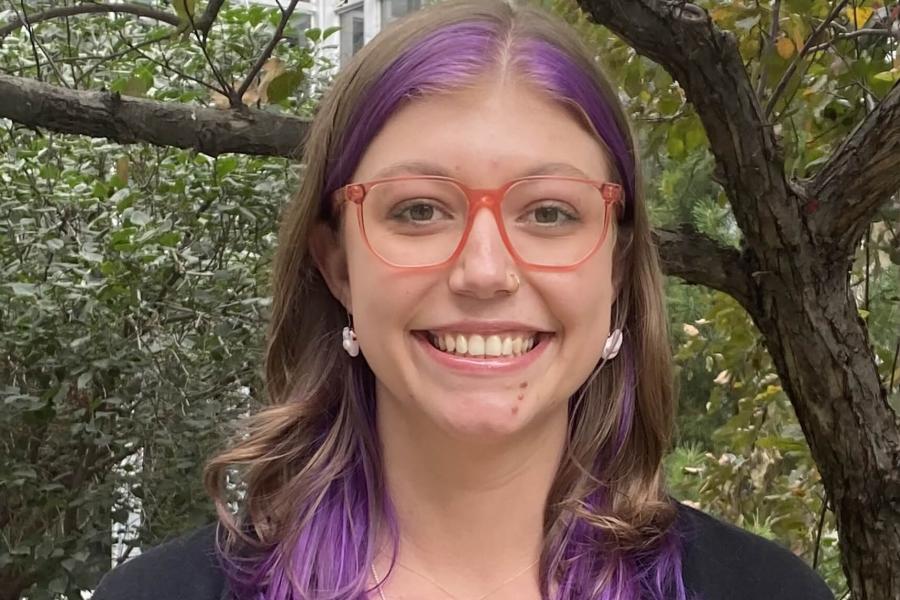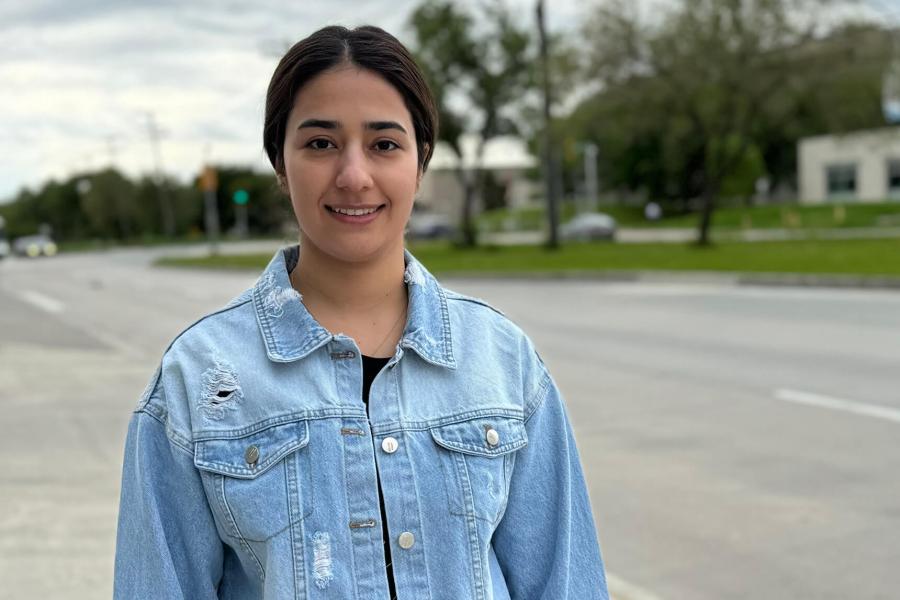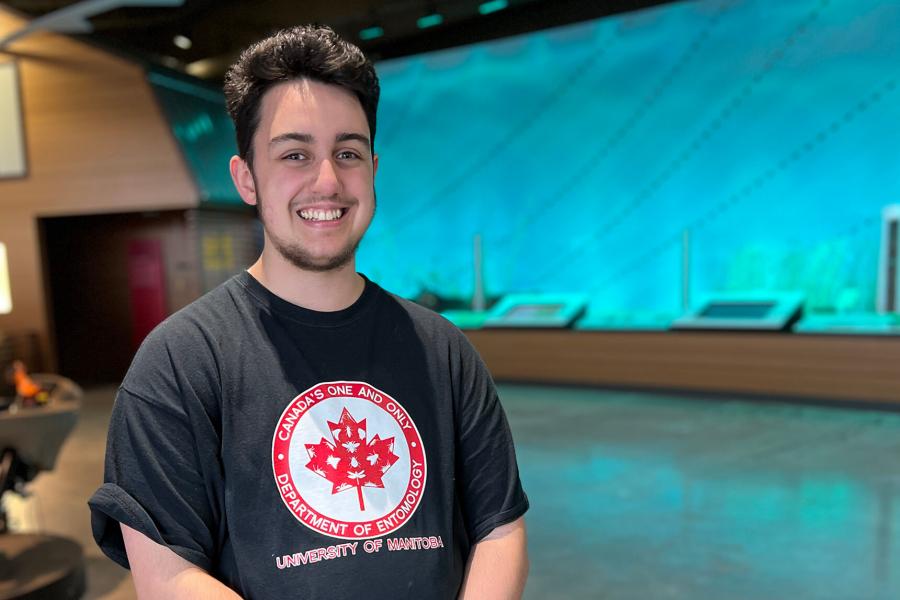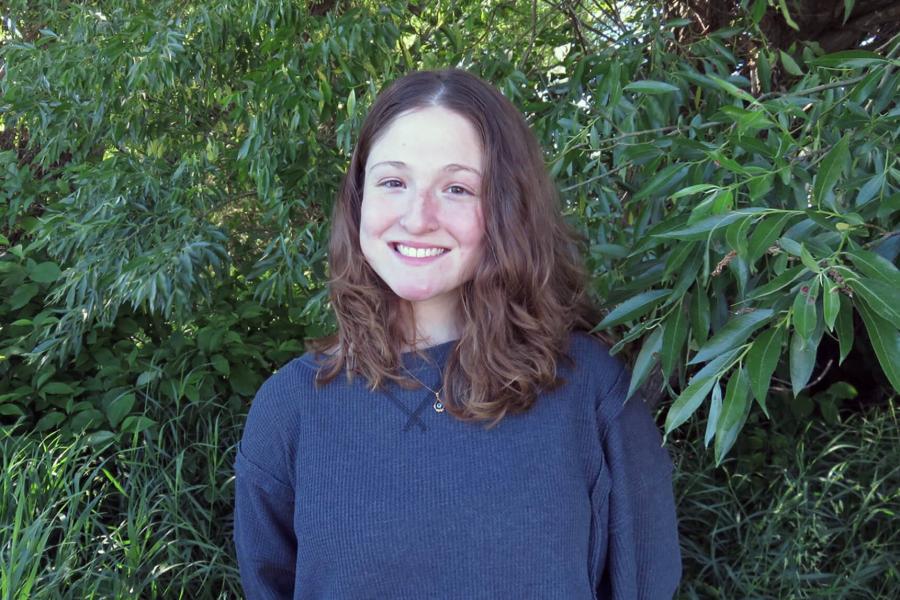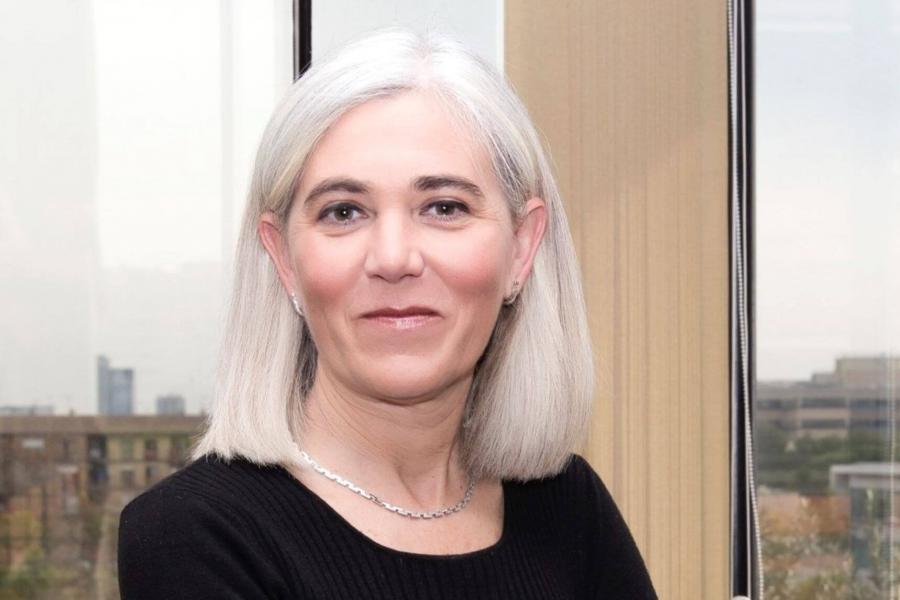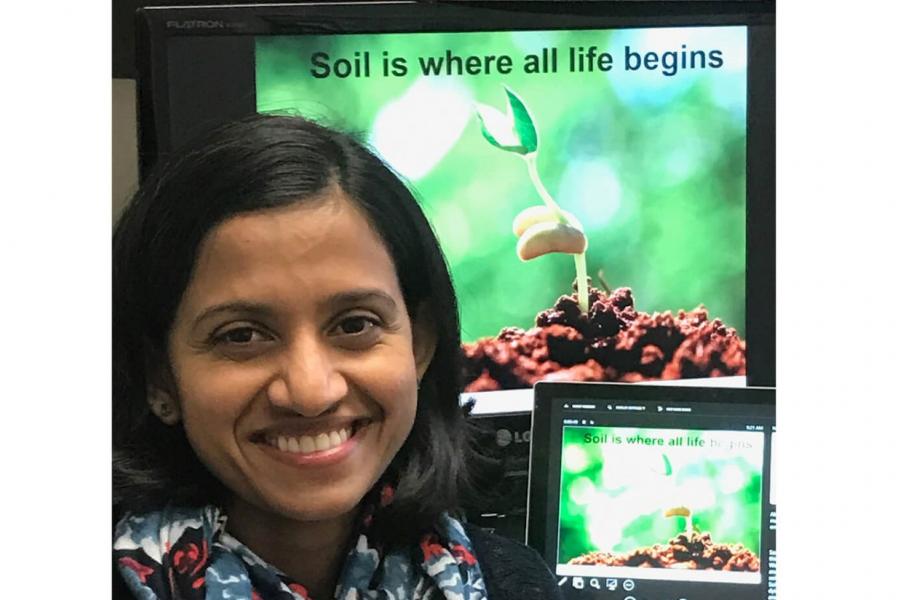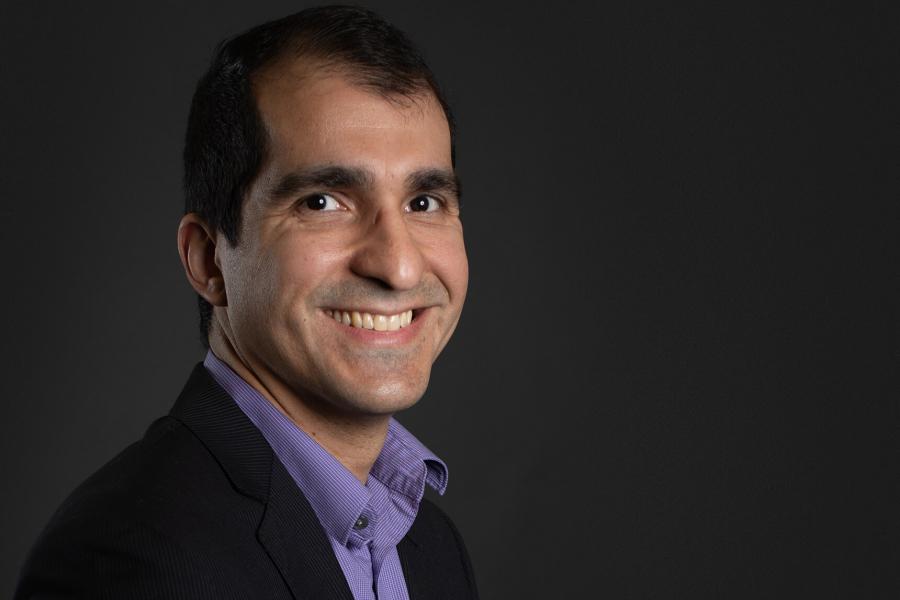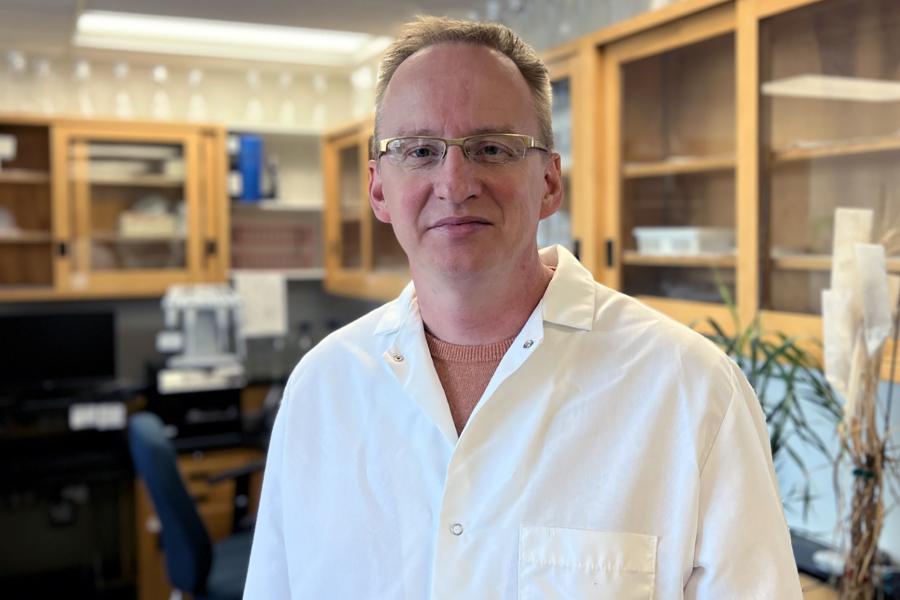MAKE Podcasts
Researchers from the Faculty of Agricultural and Food Sciences are making food make sense through science. MAKE – Manitoba Agriculture and Food Knowledge Exchange – Podcasts cover exciting research from field to plate and everywhere in between – research innovations and applications that make our agriculture and food sectors better than ever.
Extraordinary Students Doing Extraordinary Research
Welcome to the "Extraordinary Students Doing Extraordinary Research" podcast series, which highlights students from the UM's RBC Scholars in Sustainable Agriculture Program and student research.
ChangeMAKErs
Welcome to ChangeMAKErs, a MAKEManitoba podcast series highlighting research and innovation powered by members of the Faculty of Agricultural and Food Sciences.
Podcasts with our faculty
What's the Big Idea - Nazim Cicek
What's the big idea? is a podcast featuring University of Manitoba President Michael Benarroch in conversation with some of today's big thinkers. The series will feature an exciting and diverse array of voices from the UM community contributing to the cultural, social and economic well-being of the people of Manitoba, Canada and the world.
In the episode "Feeding the world without costing the Earth" , Dr. Benarroch connects with Dr. Nazim Cicek, Associate Dean (Research) in the Faculty of Agricultural and Food Sciences, about how agriculture practices are connected to the health of the entire planet and how UM research is advancing agriculture to produce food that can both nourish and sustain our world.
A conversation about natural systems agriculture with Dr. Martin Entz
Laura Telford, Organic Specialist with Manitoba Agriculture, has a conversation with long-time organic researcher, Martin Entz. They discuss the current activities of the Natural Systems Agriculture Lab at the University of Manitoba, and its role in fostering organic production in Canada.
Part 1
Part 2
Download the MP3 - Part 1 | Part 2
Dig Deeper
Dynamics of the current supply and demand for canola and wheat
The recent price spikes in the spring of 2022 were well outside all forecasts. Derek Brewin and David Simonot discuss the dynamics of the current supply and demand for canola and wheat and discuss some possible drivers for the rapid price rise this spring.
Dr. Derek Brewin, is the Head of Agribusiness and Agricultural Economics, University of Manitoba and David Simonot is a Crops Intelligence Specialist at Manitoba Agriculture.
Dig Deeper
Abstract - The impact of COVID-19 on the grains and oilseeds sector: 12 months later
A discussion on airborne diseases in the swine industry
In Manitoba, the pig industry makes a significant contribution to the local economy and the Province’s GDP. A threat to the pig industry is disease outbreaks, which can be economically and emotionally devastating. In this podcast, we talk about important pig diseases in Manitoba and their routes of transmission, with a focus on airborne transmission. The processes of airborne transmission, various factors affecting transmission possibility and distance, and strategies to protect against airborne transmission are discussed. Hosted by Van Doan of Manitoba Agriculture and Resource Development, with guest speakers Dr. Qiang Zhang and PhD student Amy La, from the Department of Biosystems Engineering at the University of Manitoba.
Dig Deeper
Antibiotic alternatives for livestock management
Antibiotic alternatives can promote growth, boost the immune system, and prevent intestinal diseases, thus improving gut health and function in poultry and swine. In this podcast, Drs. Martin Nyachoti and Chengbo Yang discuss with Amy Johnston the results of research they and others have conducted at the Department of Animal Science, University of Manitoba on various antibiotic alternatives. Although those in-feed antibiotic alternatives can help maintain a healthy gut in poultry and swine, the role of good nutritional strategies, and health and husbandry management practices are also discussed.
Amy Johnston is a provincial poultry specialist with the Manitoba Agriculture and Resource Development. Dr. Chengbo Yang, Associate Professor, Department of Animal Science, Faculty of Agricultural and Food Sciences. Dr Martin Nyachoti, Professor and Head of the Department of Animal Science, Faculty of Agricultural and Food Sciences, University of Manitoba.
Dig Deeper
Podcast - Antimicrobial use in Canadian livestock
Better Pork – The role of essential oils in gut health
Fact sheet - Optimizing gut health for swine in antibiotic free production
Increasing consumption of pulses through optimal storage, milling and processing
The key to maximizing nutritional value
The prairies are seeing more and more pulse production as demand for environmentally sustainable plant-based foods grows. Even so, Dr. Jitendra Paliwal says pulses can be one of the most underrated crops – they are a quality protein source, highly nutritious, and require fewer resources to produce than other sources of protein. But did you know that what happens between the field and the store shelf has a lot do with quality? Listen in to learn how his research program is maximizing the benefits of pulses, including how cancer detection technologies are revolutionizing bulk storage.
Dig Deeper
Dietary Gluten Avoidance in Canada
Gluten, a protein found in wheat, rye and other grains, appears in many food products on grocery store shelves and restaurant menus. In this podcast, Dr. Natalie Riediger and her guests discuss their research using the 2015 Canadian Community Health Survey dietary data as they explore as dietary gluten avoidance in Canada, including who is avoiding gluten and what their dietary patterns are.
Natalie Riediger is an Assistant Professor in the Department of Food and Human Nutritional Sciences at the University of Manitoba. Christa Dubesky is the President of the Manitoba Chapter of the Canadian Celiac Association. Anne Waugh is an MSc student in the Department of Food and Human Nutritional Sciences and Research Assistant working with Dr. Riediger.
Dig Deeper
Infographic - Dietary Gluten Avoidance in Canada
Gluten-free diet is expensive, socially challenging for those with celiac disease and wheat allergy
Attracting wild bees and other beneficial insects to farmland
Dr. Yvonne Lawley and Dr. Jason Gibbs are testing different on-farm approaches to provide habitat for wild bees and insects that benefit crops as part of a healthy agro-ecosystem. In this podcast we learn about their latest research, plus the many differences between wild bees and honey bees. For starters, Manitoba is home to more than 360 species of wild bees!
Jason Gibbs is an assistant professor in entomology at the University of Manitoba. His research includes pollinator ecology and diversity in agricultural landscapes and native bee conservation. Yvonne Lawley is an assistant professor at the University of Manitoba specializing in corn and soybean agronomy, cover crops and cropping systems design research.
Dig Deeper
Canola's bright future
Breeding research aims to add 'high quality protein' to the list of nutritional benefits
Canada is a powerhouse when it comes to farming and food production. Research in canola is creating excitement that this crop may have the ability to enter into the plant protein market for human consumption, adding to its excellent reputation as a healthy cooking oil. In this podcast, Dr. Rob Duncan describes current research to further improve Canada's most valuable crop. He also delves into plant breeding terminology, shedding light on the different approaches for improving desirable plant attributes.
Rob Duncan is an associate professor at the University of Manitoba focusing on improving canola and rapeseed cultivars in Western Canada.
Dig Deeper
The role of cattle in the environment
More complex than the simple "Cattle = GHG" sound bite
In this podcast Dr. Kim Ominski explores the impact of cattle and the environment. She presents an equation where impacts of GHG as well as benefits such as biodiversity and carbon sequestration are considered. What cattle eat, how they affect the environment, and the research being done to further improve the sustainability of livestock production systems in Canada are covered.
Kim Ominski is a professor at the University of Manitoba and Director of the National Centre for Livestock and the Environment. Her multi-disciplinary research program focuses on strategies for improving the long term sustainability of beef cattle production systems.
Dig Deeper
Microorganisms in our food and in our bodies
Tips to nurture the good and destroy the bad
The unseen world of microbiology is hard to navigate. Dr. Claudia Narvaez explains the role of microbiology in food safety and the importance of understanding germs and bacteria to ensure safety and true cleanliness. Topics span your microbiome, the cleanliness of your counter top, and the biofilm that bacteria can produce to resist your typical clean up.
Claudia Narvaez is an associate professor in Food and Human Nutritional Sciences at the University of Manitoba. Her research includes the development of suitable interventions to reduce the presence of pathogenic organisms in the food continuum.
Dig Deeper
Protein food choices
Plant and animal sources explained
Manitoba is a leader in protein production. In this podcast, Dr. James House discusses ways in which we are improving our understanding of how the body utilizes protein, and how we can best move forward with sustainable ways to produce and process high quality protein from plants and animals.
Jim House is a professor and head of the Department of Food and Human Nutritional Sciences at the University of Manitoba. His research team within the Protein Quality Laboratory is examining factors that influence the amino acid composition and digestibility of plant- and animal-based proteins for the human diet. Current research is exploring the effects of environmental factors, crop genetics, and food processing factors on protein quality to assist in the development of innovative and healthy protein foods.
Dig Deeper
Advancing Protein Food Innovations at the University of Manitoba
Is strip till a fit for your farm?
On-farm research is providing the answer
Strip till is an option for farmers wanting to reduce tillage with row crops like corn, soybeans and edible beans. Dr. Yvonne Lawley and John Heard discuss what they are learning about strip till benefits and optimal agronomic practices by working directly with Manitoba farmers.
Yvonne Lawley (@YvonneLawley_UM) is an assistant professor at the University of Manitoba in agronomy and cropping systems design. John Heard (@SoilSafariJohn) is the provincial soil fertility extension specialist with the Government of Manitoba. Both Yvonne and John work closely with farmers, agronomists and other researchers to identify and promote beneficial agronomic practices.
Dig Deeper
Needle-free vaccination systems for cattle
Proven effective by research
In this producer-focused podcast, Dr. Kim Ominski talks about the use of needle-free injection systems for cattle based on her research with colleagues.
Kim Ominski is a professor at the University of Manitoba and Director of the National Centre for Livestock and the Environment. Her research focuses on strategies for improving the long term sustainability of beef cattle production systems.
Podcasts with our community
How to add more plant-based proteins to your meals
Plant-based proteins aren't just for vegans or vegetarians, they're a tasty, healthy option for everyone to enjoy. Join us as we chat with Getty Stewart, Professional Home Economist, to learn tips and ideas for where to find plant based proteins and how to add more of them to our weekly meals.
Canada's Verified Beef Production Plus Program
Sustainable practices validated by research at its core
The Verified Beef Production Plus Program - VBP+ for short - is a voluntary, industry-led, market driven initiative. VBP+ validates sustainable beef production practices that are based on research findings from across the country, including the University of Manitoba. In this podcast, Betty Green, Manitoba's VBP+ coordinator, describes the program and shares her own personal story as a Manitoba farmer.
Tips for small-scale poultry farmers
To keep their flocks healthy and disease free
Not every farm has to be a big business, but every farm needs to ensure the safety of their animals. Our guest for this podcast, provincial poultry specialist Amy Johnston, discusses strategies that small and hobby farms can put into practice to promote and improve animal health and welfare.
Antimicrobial use in Canadian livestock
Regulation changes and new alternatives emerging from research
This podcast looks at the use of antibiotics and antimicrobial resistance in livestock production. Our guest, provincial poultry specialist Amy Johnston discusses recent changes in regulations as well as some research advancements in antibiotic alternatives to ensure livestock health and food safety.
Manitoba's Food Development Centre
Where food innovations take shape
Do you know where innovative new food products and new food ingredients get their start? Our guest is Robin Young, Chief Operating Officer of the Food Development Centre. She shares how FDC is bringing together scientists and entrepreneurs to drive innovation and fuel our economy. The FDC is a trusted source of new food products and new food ingredients, and continued food testing to ensure quality foods make their way to market.
Other podcasts
Crops
RealAgriculture, Farming Forward: The economics and science behind the right rate of nitrogen fertilizer
The Agronomists, Ep 149: SCN and root rots of soybean with Albert Tenuta and Mario Tenuta
Soybean cyst nematode is a tiny but very destructive pest of soybean. It’s so damaging, that its presence can cause up to 25 per cent yield loss before symptoms are visible.
The Agronomists, Ep 139: The cover crop fit with Peter Johnson and Dr. Yvonne Lawley
Cover crops are not magic. It's important to first understand the goal of using a cover crop and then measuring up each species and season to see if it’s a match. Farmers from east to west are using cover crops to accomplish several things: reducing erosion, cycling nutrients, fixing nitrogen, and fighting weeds.
The Agronomists, Ep 133: Choosing enhanced efficiency N products with Dale Cowan, Ray Dowbenko, and Mario Tenuta
Once nitrogen fertilizer lands on or in soil it may be at risk of loss — through leaching, volatilization, or denitrification. Management choices can minimize losses, through split-application, deep banding, or choice of product, but adding an enhanced efficiency fertilizer product can guard against loss, too.
Ep. 80 - Verticillium stripe
University of Manitoba professor and plant disease specialist Dilantha Fernando talks verticillium stripe with host Jay Whetter. Verticillium stripe is a relatively new disease of canola on the Canadian Prairies. This podcast conversation starts with disease origins and moves on to identification and management.
Benefits of cover crops
Farmers are seeing the benefits in cover crops. That's according to a University of Manitoba survey reflecting the growing use of cover crops on the Prairies.
Callum Morrison, a graduate student at the U of M, created the survey alongside Professor Yvonne Lawley. Morrison says this practice is in the early stage of adoption on the Prairies, there’s not that much information available as to how farmers are integrating cover crops into their operations.
He'll share the details of the survey and what the roughly 200 farmers shared about their experiences in 2020.
Potato early dying and CanPEDNet update with Dr. Mario Tenuta
Potato early dying complex is aptly named, with many factors contributing to this complicated disease of potato crops.
Do cattle have a role in regenerative agriculture?
Join Dr. Martin Entz of the University of Manitoba as he discusses the goals of regenerative agriculture and the benefits of integrated crop and livestock production.
Future-Proof Farming: Healthy soil, healthy ROI
Dr. Martin Entz of the University of Manitoba believes that Canadians were given a sacred gift: some of the best soils in the world.
Benefits of cover crops
Farmers are seeing the benefits in cover crops. That's according to a University of Manitoba survey reflecting the growing use of cover crops on the Prairies.
Callum Morrison, a graduate student at the U of M, created the survey alongside Professor Yvonne Lawley. Morrison says this practice is in the early stage of adoption on the Prairies, there’s not that much information available as to how farmers are integrating cover crops into their operations.
He'll share the details of the survey and what the roughly 200 farmers shared about their experiences in 2020.
Flea Beetles - MCGA webinar - April 9, 2021
Manitoba Canola Growers hosted a flea beetle webinar on April 8, 2021. This podcast is from that webinar recording. Guests are Manitoba Agriculture entomologist John Gavloski, University of Manitoba flea beetle research Alejandro Costamagna, Saskatchewan agronomist Larry Durand and CCC agronomy specialists Keith Gabert and Autumn Barnes.
Seedling disease complex, Krista Anderson, Mark Belmonte and Autumn Barnes, June 3, 2020
Pythium species, Fusarium species and Rhizoctonia solani – the "three amigos" – can cause seed rots, root rots and stem decay on young canola plants. Seed treatments are generally pretty good, but Krista Anderson from Bayer CropScience, Dr. Mark Belmonte from University of Manitoba and Autumn Barnes from the CCC explain the factors that can increase risks. They also describe management options (including rotation) that can keep these pathogens of the soil microbiome from rising up.
Agronomy Geeks, Ep 13: Don Flaten
With 20 years of teaching and research achieved, Dr. Don Flaten says it’s time to retire. It’s a retirement well earned, as the soil scientist with the University of Manitoba has taught over a thousand students the ins and outs of soil, its importance, and revealed to many the complexity of nutrient interactions.
Canola Discovery Forum - 4R panel - December 11, 2020
Canola Watch podcast host Jay Whetter moderated a live panel on 4R nutrient management at Canola Discovery Forum on December 2, 2020. This podcast is based on the recording of that panel discussion. Guests are Lyle Cowell with Nutrien in Saskatchewan, Dr. Mario Tenuta with the University of Manitoba, Dean Nelson, who farms in Alberta, and Adam Gurr, who farms in Manitoba.
The Agronomists, Ep 24: Deb Campbell and Don Flaten on 4R nutrient strategy
The right source, right rate, right time, right place for nutrients adds up to more efficient use of fertilizer dollars, and keeps nutrients in the fields and out of our water and air.
Livestock
Are Dairy Farmers Happy? Ft. Dr. Meagan King
Dr. Meagan King from the University of Manitoba joins us to discuss mental health. She is leading a research project about mental health in farming, and all Canadian farmers are invited to participate. We also discuss some more lighthearted topics related to other research projects that Dr. Meagan has done.
Enhancing Productivity and Environmental Sustainability with Marcos Cordeiro
Marcos Cordeiro is an Assistant Professor in the Department of Animal Science at the University of Manitoba. He holds a PhD in Biosystems Engineering and is registered as a Professional Engineer in Manitoba. He has extensive expertise in agro-environmental modelling, statistical analysis of large datasets (i.e., big data), spatial analyses using geographical information systems (GIS) and remote sensing (RS), and dataset development.
Precision Technology to Monitor and Predict Animal Health
Cow lameness can have a negative impact on your herd milk production. See how monitoring animal health can help as Dr. Meagan King joins Chris in this week’s episode.
Talking Ticks & Bovine Anaplasmosis with Dr. Kateryn Rochon
In this episode, we discuss all things ticks. Kateryn is currently working on a project that is assessing the relationship between tick abundance on pastures and cattle, and the risk ticks represent to cattle and livestock workers.
Do cattle have a role in regenerative agriculture?
Join Dr. Martin Entz of the University of Manitoba as he discusses the goals of regenerative agriculture and the benefits of integrated crop and livestock production.
Are cows wasting human food or eating food waste?
Join Dr. Kim Ominski as she discusses types of food wastes, opportunities and challenges for using food wastes as livestock feed, and the overlap between human food and cattle feed.
Food and nutrition
Connecting nutritional strategies with chronic disease prevention with Dr. Dylan MacKay
Nutrition Conversations by The Canadian Nutrition Society
Chronic conditions such as diabetes and chronic kidney disease are major public health concerns and on the rise worldwide. Dietary interventions that include foods such as fruit and vegetables may help improve health outcomes, but what about adherence? Could providing foods directly to people as part of health services be a solution?
Eggs: Let’s Get Cracking with Dr. Jim House
Nutrition Conversations by The Canadian Nutrition Society
In this episode, Dr. House discusses the nutritional profile of eggs, their role on our health, and the new facilities for egg research at the University of Manitoba.
Episode 6 – Interview with Dr. Dylan MacKay
This episode features Dr. Dylan MacKay, a researcher and assistant professor at the University of Manitoba in the department of food and human nutrition. In this episode, Dr. MacKay discusses his research involving nutrition interventions in chronic kidney disease and diabetes.
Nutrigenetics- What Science Says About Genetically-Based Diet Plans (Interview with Dr. Dylan MacKay, Assistant Professor at the University of Manitoba)
Welcome to SciSection! Joining us in today's interview is our special guest Dr. Dylan MacKay, an assistant professor and researcher within the University of Manitoba's Department of Food and Human Nutritional Sciences 🍎🥼! We'll be learning about his research concerning the role of lifestyle in the treatment of chronic diseases, how the new scientific trend of nutrigenomics may not be the key to the perfect diet, combating scientific misinformation with transparency and trust, and so much more👀!
Ep. 77 - Canola oil fatty acids
What is canola oil? Michael Eskin, University of Manitoba distinguished professor, talks to host Jay Whetter about the fatty acids, including the kinky ones, that make up canola oil. After listening to this podcast, watch Eskin's rap – yes, rap – about fatty acids.
Episode 1: Salary and Career Trends, Food Science Raps, and the Impact of Race - ift.org
Find fresh data on salary and career trends in food science from top editors. Hear a lively (and musical) conversation with University of Manitoba biochemist and 2022 IFT Lifetime Achievement Award winner Michael Eskin. Listen to the timely insights of IFT Fellow Larry Keener on diversity, equity and inclusion principles and the impact of race in the scientific community.
Food: Security and Insecurity with Dr. Natalie Riediger
From working in a four generations family owned and operated grocery store in the inner city of Winnipeg to receiving 2020 Terry G. Falconer memorial Rh Institute Foundation Emerging Research Award, Dr. Natalie Riediger has been either working in or researching about food security. Natalie walks us through the Four Pillars that describe food security: availability, access, utilization, and stability.
General
Feeding the world without costing the earth with Dr. Nazim Cicek
In this episode, Michael Benarroch speaks to Dr. Nazim Cicek whose big ideas are proving that it doesn't have to cost the earth to feed the world. He's a professor in the Department of Biosystems Engineering and Associate Dean Research in the Faculty of Agriculture and Food Science. Michael and Nazim explore how research is advancing sustainable agriculture to address food shortages and the climate crisis.
U Talk S2E4: Preventing Tickborne Illness
Camping, hiking, and nature exploration continue as people enjoy the latter half of summer before the Canadian fall kicks in and the dreaded winter. Spending as much outdoor time as possible, people may not be thinking about ticks as the height of summer passes. However, according to Associate Professor - Veterinary Entomology at the University of Manitoba, Dr. Kateryn Rochon, it's essential to keep close attention until there is snow on the ground.
Dr. Kateryn walks us through the various ticks we can find here in Canada, how to identify them, and the best practices to protect yourself from tick-borne diseases.

